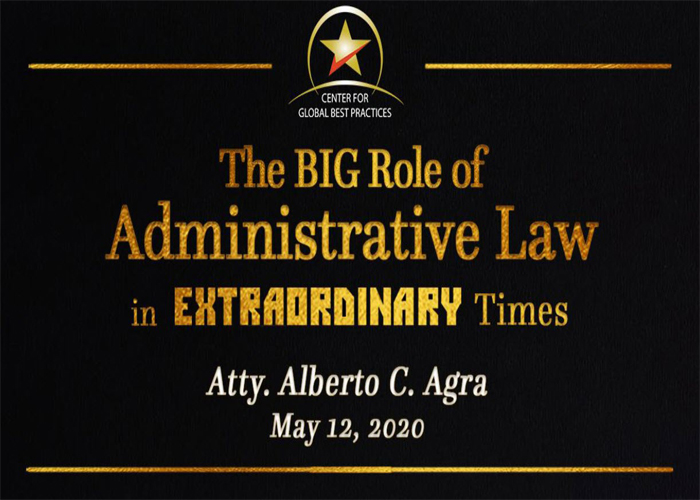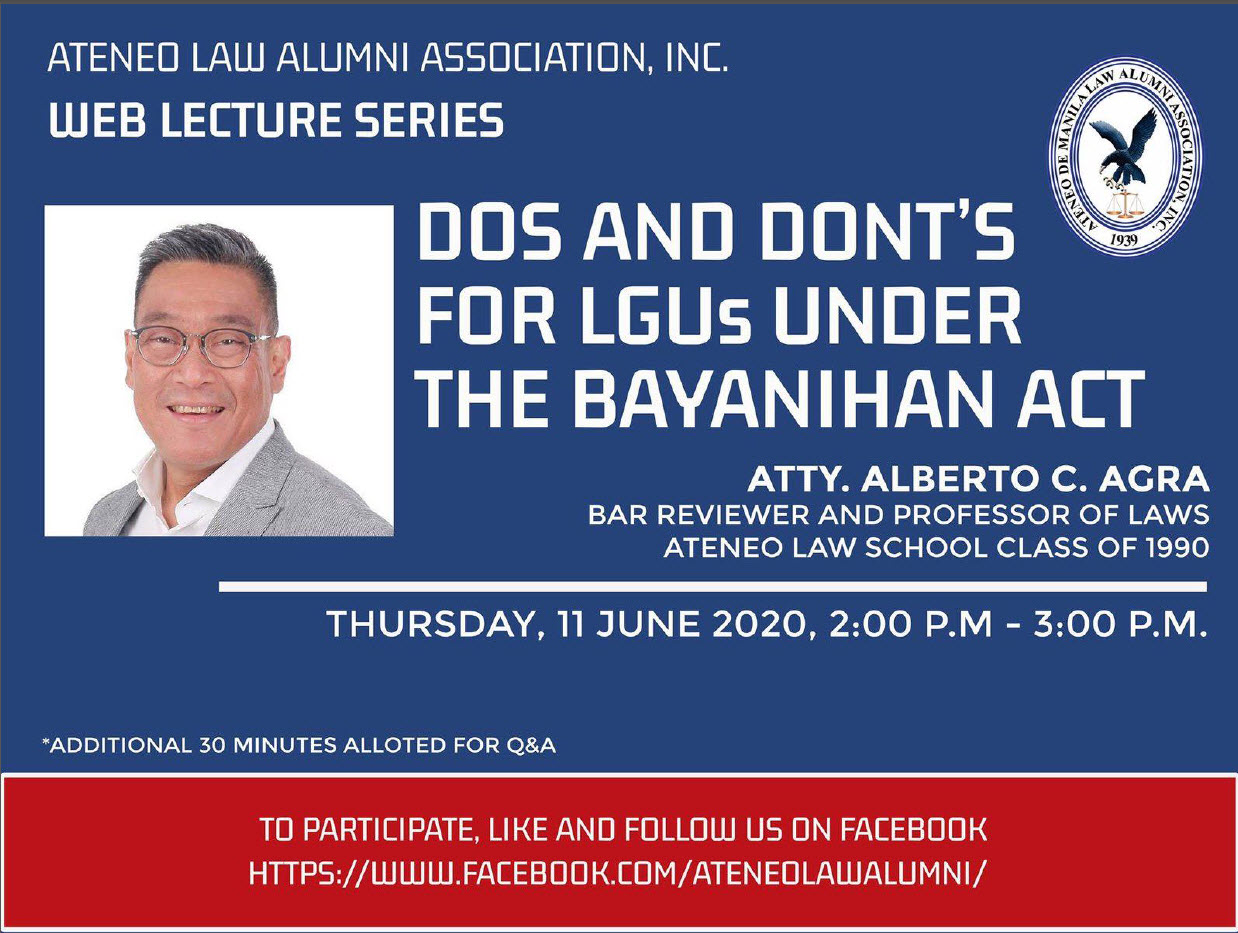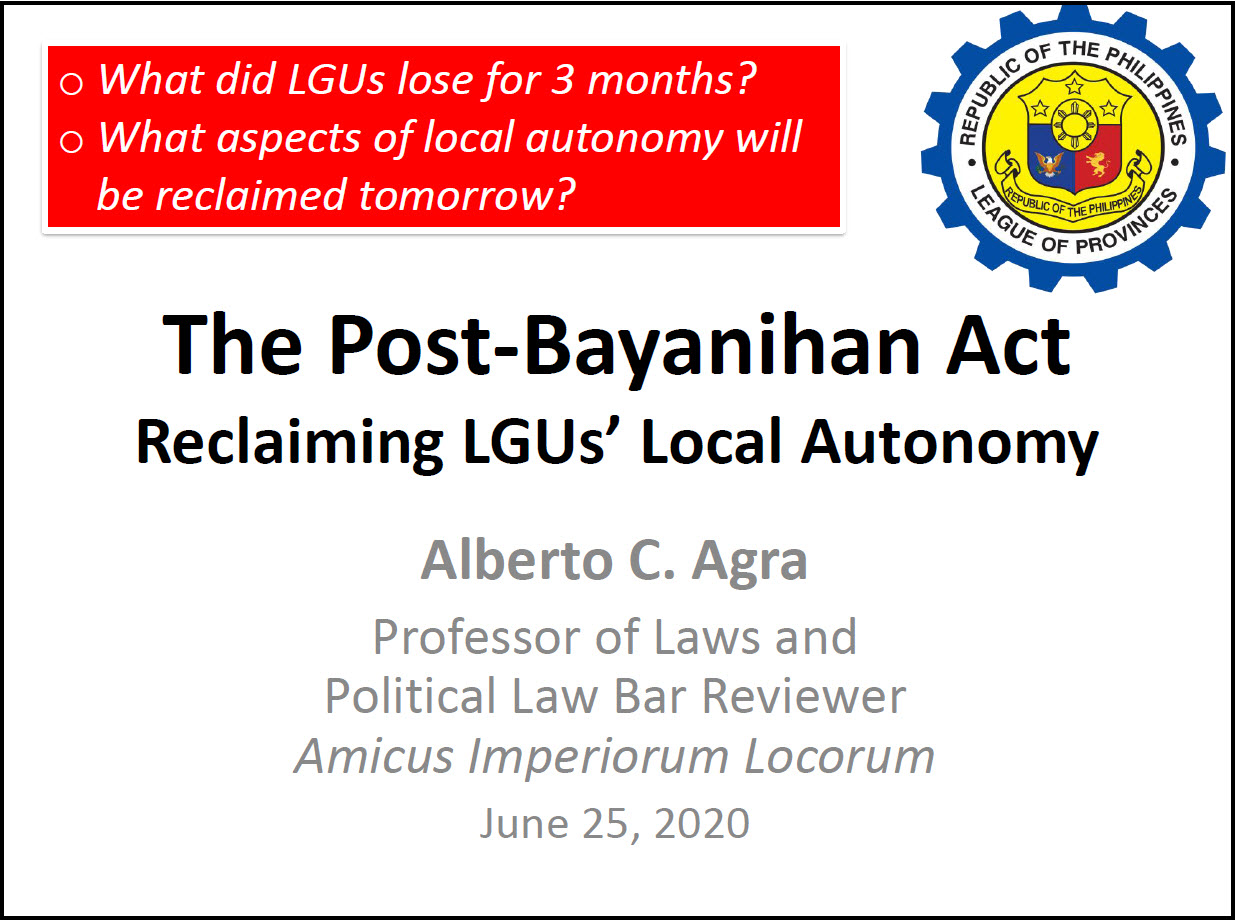Agra PPPP Ordinance

Learning Materials
Click on the Image to Download File

Total:

Total:

Total:

Total:

Total:

Click on the Image to Download File





Every time this columnist lectures on public-private partnerships (PPPs), he cannot de-emphasize the differences in the frameworks on joint ventures (JVs). A JV is a PPP modality whereby both public- and private-sector proponents (PSPs) contractually agree to a common purpose, contribute, exchange resources, jointly perform functions and proportionately share in governance, revenues, profits, losses and risks. The two types of JVs are contrasted as follows:
This columnist had the privileged of speaking about the Future of public-private partnerships (PPPs) in the Philippines before lawyers and clients of Dentons in Beijing on September 22. Dentons, a global law firm that has around 600 lawyers in its Beijing office, recently bagged the International Firm of the Year at the Lawyer Awards 2017.
Aware of the opportunities in the Philippines and the favorable PPP climate in the country, China state-owned and private corporations, and law firms, such as Dentons, would want to explore these. But like in any other investment venture, knowing the legal environment is a must. The seminar on PPP had this in mind.
Here are the questions the participants raised, and these could very well be the same ones foreign, even local, investors may ask:
Are there opportunities? Of course, there are. Under the “Build Build Build” program of the current administration, PPPs may be pursued for hard and soft projects —expressways, bridges, airports, reclamation, rail and water supply; and health care, socialized housing and rehabilitation centers. These projects may even be combined into one contract under the bundling approach.
Need ROW. For infrastructure projects that traverse rows of private properties, access and permission must be obtained from the owners. Without ROW, there can be no such road, expressway, rail or power-interconnection project over or through private or public land.
Public purpose. PPP projects and all government projects are intended for the public good. If government funds will be used for ROW purposes, then public purpose is a must for government funds cannot be used for private purposes.
ROW is not free. When ROW is exercised, the parties to a PPP, and consumers and end-users benefit. Thus, the private owner who will be permanently disturbed or deprived of his or her land must be compensated. Apart from legal easements, ROW over or through private land requires the “taker” to pay the owner. While voluntary sale based on an agreed price is the ideal, the “taker” may seek relief from the courts by filing expropriation cases. Delay in negotiations and court proceedings are the real culprits.
ROW in PPPs. PPP arrangements require the identification and delineation of roles and responsibilities. For example, in build-operate-transfer or build-transfer-operate arrangements, the private sector assumes these three functions including the financing and designing of the facility. What remains with or what is normally assumed by the government is providing for ROW.
This was the challenge posed to the participants of the most recent seminar organized by the Local Government Academy (LGA)-Department of Interior and Local Governments on public-private partnerships (PPPs).
Fourteen cities. Last week officials from 14 cities attended the “Enhancing Local Governance, Accountability and Reform through PPP-Technical, Financial and Environmental, Review of Policy and Legal Framework” offered by LGA. Elective and career officials from the Cities of Pasig, Malabon, Tabuk, San Fernando (La Union), San Carlos, Alaminos, Dagupan, Santiago, Muñoz, San Pablo, Santa Rosa, Puerto Princesa and Carcar actively participated in the three-day seminar from September 6 to 8.
The “amendments” provision is one of the shortest, yet important and desirable, boilerplate provisions of public-private partnership (PPP) contracts. The inclusion of this provision could address matters not contemplated or could not be contemplated as of the date of execution.
Sample texts. Some PPP contracts word this provision this way: “This agreement may be amended, modified, or altered only by mutual agreement and a duly executed written instrument signed by the parties’ authorized representatives.” Others, like this, “No amendments or modifications of this agreement shall be valid except by written agreement signed by the duly authorized representatives of the parties.”
Components. There are five parts of this provision: (1) the subject which is the agreement, (2) of the amendment, alteration or modification, (3) which requires mutual agreement, (4) embodied in a written document and (5) signed by authorized representatives of the parties to the public-private partnerships (PPP).
Optional inclusion. The insertion of this provision, like any other provision in the main PPP contract, while desirable, must be agreed upon between the Parties. All terms of the contract have a purpose and their inclusion and exclusion have an impact.
‘We’ve already done it,” underscored Gov. Ed Chatto of the Provincial Government of Bohol (PGBh) in this ninth edition of PPP Conversations. In the areas of water and power, even prior to the enactment of its public-private partnership (PPP) Ordinance, the PGBh has entered into and has been benefitting, to this very day, from joint-venture arrangements with the private sector.
Chatto shares with us his thoughts on this strategy.
What is your concept of PPP?
Public-Private Partnership (PPP) presents the government (both national and local) with an opportunity to expand the reach of governance services by taking advantage of access to capital, management acumen and technological expertise that is abundant in the private sector.
What makes PPP a viable and preferred development strategy at all levels?
From a local government unit (LGU) perspective, the funds provided by the national government to LGUs, and even to its own line agencies, is limited. PPP presents an opportunity to address the always-prevalent scarcity of funds. On top of that, it also provides government with the benefit of top-of-the-line technology and expertise from the private sector. Operational efficiency and sustainability of enterprises (especially in terms of revenue), which are often not optimally explored (or at worst are even ignored) in purely government-run entities, become primordial concerns in PPP ventures.
By what authority can a private-sector proponent (PSP) in a public-private partnership (PPP) arrangement operate a project that is traditionally government’s? By what right can that PSP charge and collect fees from the consumers or public? What does government get in return under the scheme?
In a PPP, let us say, for water supply, power transmission, public market, toll road or bridge, airport, reclamation or telecommunications, how can the PSP undertake these? In order for the PSP to do these, there must be a “grant of rights”.
Indispensability. No grant, no project. Without this grant, concession, license, or vestiture of authority by government, the PSP cannot supply water, transmit power or operate a public market, charge fees and earn from the project. The PSP, on its own, cannot do these “public” projects without an express grant.
Grantor. The relevant government agency—national government agency, government corporation or instrumentality, regulatory agency or local government unit—which, under its mandate, has the responsibility to pursue or regulate a particular PPP project, must accede and make such grant.
Grantee. In a PPP, the grantee is the winning PSP. After going through competition for the market, the PSP secures the award.